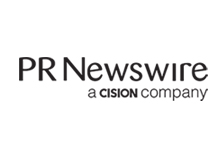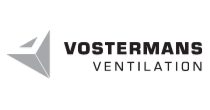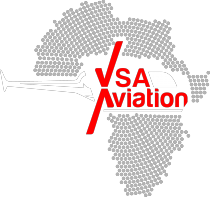Global $29.1 Billion Rheumatoid Arthritis (RA) Market Analysis & Drug Forecasts, 2019-2020 & 2029
DUBLIN, Jan. 14, 2021 /PRNewswire/ -- The "Rheumatoid Arthritis - Global Drug Forecast and Market Analysis to 2029" report has been added to ResearchAndMarkets.com's offering.
https://mma.prnewswire.com/media/539438/Research_and_Markets_Logo.jpg
Global revenues from RA drug sales are expected to grow from $26.2B in 2019 to $29.1B in 2029.
The publisher projects that the global RA marketplace - which, for the purposes of this report, comprises eight major pharmaceutical markets (8MM) (US, France, Germany, Italy, Spain, UK, Japan, and Australia) - will grow at a compound annual growth rate (CAGR) of 1.0% over the 10-year forecast.
Global growth in the RA market will be driven by continued uptake of new products in the IL-6 and JAK inhibitor classes along with the anticipated approval and launch of four pipeline therapies. This growth will be slackened by sales erosion from biosimilars and generic tofacitinib. Over 70% of sales will come from the US; the US has a large population of RA patients (estimated 1.8M diagnosed prevalent cases in 2029) and high price tags for biologic and targeted synthetic disease modifying anti-rheumatic drugs (DMARDs).
Biosimilar erosion will temper the growth of the RA market during the forecast period; between 2019 and 2029, biosimilars sales will increase from 5% to 28% of global sales. Due to favorable local regulations and increased access, biosimilar uptake is expected to be the highest in the 5EU; by 2029, the publisher projects that biosimilar sales in 5EU will represent over 45% of its total sales -60% of which will come from sales of adalimumab and etanercept biosimilars.
The publisher expects that despite biosimilar erosion, Pfizer/Amgen's Enbrel and AbbVie's Humira will remain the global sales leaders during the forecast period, amassing combined sales of $12.6B in 2019 and $9.0B in 2029. Sales of Enbrel and Humira are more likely to be protected from biosimilar erosion than Remicade (negative CAGR of 6.8%) mainly due to a lack of biosimilar availability in the US, the largest RA market in the 8MM. Etanercept and adalimumab biosimilars will not be available in the US until 2028 and 2023, respectively.
Although biosimilars may temper the impact of blockbuster biologics, the publisher expects that the growth of the small molecule Janus kinase (JAK) inhibitor class will powerfully shape the RA market of the future. The publisher projects that the JAK inhibitor class will continue to grow significantly over the forecast period, increasing at a CAGR of 7.2%. This growth is expected to be strongest in the 5EU, where the first JAK inhibitors, Pfizer's Xeljanz and Eli Lilly's Olumiant, only became available starting in 2017. The recent global launch of AbbVie's JAK1 inhibitor, Rinvoq, is expected to significantly expand JAK inhibitor market share, bringing in $2.2B in sales by 2029.
The late-stage pipeline for RA consists of three subcutaneously delivered biologics (the TNF inhibitor ozoralizumab, the interleukin 6 [IL-6] inhibitor olokizumab, and the granulocyte-macrophage colony-stimulating factor [GM-CSF] inhibitor otilimab) and one oral kinase inhibitor (the BTK inhibitor fenebrutinib). Key opinion leaders (KOLs) expressed measured enthusiasm for these agents-they welcomed the potential availability of new mechanisms of action but did not think that any of them would be more or even equally effective as JAK inhibitors.
Of these agents, KOLs were the most enthusiastic about GSK's GM-CSF inhibitor, otilimab, expected to achieve global sales of $626.8M by 2029. All together, these four pipeline agents are expected to claim less than 5% of the RA market in 2029, equivalent to about $1.1B.
Key Questions Answered
-- With the increased entry of biosimilars into the RA marketplace, sales
growth has begun to slacken and will likely continue to slow over the
next 10 years.
-- How will biosimilar uptake differ across the 8MM?
-- What companies and drugs will be most affected by sales erosion from
biosimilars?
-- Although biosimilars may slow the growth of the RA market, the publisher
expects that new agents in the JAK inhibitor class will powerfully shape
the RA market going forward.
-- What are the main R&D trends in the RA market and which companies are
leading the way?
-- Are there major differences in the mechanisms of action used by
therapies in late-stage versus early-stage clinical development?
-- KOLs interviewed by the publisher have indicated that there are still
many remaining unmet needs within the RA indication.
-- What are the main unmet needs in the RA market?
-- How can the pharmaceutical industry address these needs?
-- To what degree will the therapies under development fulfill these unmet
needs?
Key Highlights
-- The greatest drivers of growth in the global RA market will be the
continued uptake of new products in the IL-6 and JAK inhibitor classes,
the anticipated approval and launch of four pipeline therapies, a
steadily climbing diagnosed prevalence rate, and a high overall
treatment rate.
-- The main barriers to growth in the RA market will be significant market
share erosion from biosimilars and tofacitinib generics as well as a
challenging environment for new product launches due to intense
competition in the market.
-- KOLs expressed measured enthusiasm for the four pipeline agents in
development. Of these agents, KOLs were most interested in the two with
new mechanisms of action: GSK's GM-CSF inhibitor, otilimab, and
Roche/Genentech's BTK inhibitor, fenebrutinib. Although they were
dubious that these agents' efficacy would be comparable to that of JAK
inhibitors, they believed they would expand available options for
patients and could potentially be useful in future combination regimens.
-- The most important unmet needs in RA are those for earlier diagnosis and
treatment, more cost-effective medications, personalized strategies for
treatment of active disease, a better-defined approach to de-escalation
of DMARDs during remission, as well as new options for patients with
treatment-refractory disease.
Scope
-- Overview of RA including epidemiology, etiology, pathophysiology,
symptoms, diagnosis, and treatment guidelines.
-- Topline RA therapeutics market revenue, annual cost of therapy, and
major pipeline product sales in the forecast period.
-- Key topics covered include current treatment and pipeline therapies,
unmet needs and opportunities, and the drivers and barriers affecting RA
therapeutics sales in the 8MM.
-- Pipeline analysis: Comprehensive data split across different phases,
emerging novel trends under development, and detailed analysis of
late-stage pipeline drugs.
-- Analysis of the current and future market competition in the global RA
therapeutics market. Insightful review of the key industry drivers,
restraints and challenges. Each trend is independently researched to
provide qualitative analysis of its implications.
Reasons to Buy
-- Develop and design your in-licensing and out-licensing strategies, using
a detailed overview of current pipeline products and technologies to
identify companies with the most robust pipelines.
-- Develop business strategies by understanding the trends shaping and
driving the global RA therapeutics market.
-- Drive revenues by understanding the key trends, innovative products and
technologies, market segments, and companies likely to impact the global
RA market in the future.
-- Formulate effective sales and marketing strategies by understanding the
competitive landscape and by analyzing the performance of various
competitors.
-- Identify emerging players with potentially strong product portfolios and
create effective counter-strategies to gain a competitive advantage.
-- Track drug sales in the global RA therapeutics market from 2019-2029.
-- Organize your sales and marketing efforts by identifying the market
categories and segments that present maximum opportunities for
consolidations, investments and strategic partnerships.
Key Topics Covered:
1 Table of Contents
1.1 List of Tables
1.2 List of Figures
2 Rheumatoid Arthritis: Executive Summary
2.1 Biosimilar and Generic Erosion Will Stymie Sales Growth in the RA Market from 2019-2029
2.2 Development of Novel Oral Agents and Biosimilars Are Popular R&D Strategies
2.3 Opportunities Remain for More Rapid, Targeted, and Cost-Effective Treatment for RA Patients
2.4 Late-Stage RA Pipeline Holds Promise But Likely Won't Match the Utility of JAK Inhibitors
2.5 What Do Physicians Think?
3 Introduction
3.1 Catalyst
3.2 Related Reports
3.3 Upcoming Related Reports
4 Disease Overview
4.1 Etiology
4.2 Pathophysiology
4.3 Symptoms and Severity Classifications
5 Epidemiology
5.1 Risk Factors and Comorbidities
5.2 Global and Historical Trends
5.3 Forecast Methodology
5.4 Epidemiological Forecast for RA (2019-2029)
5.5 Discussion
6 Disease Management
6.1 Diagnosis and Treatment Overview
6.2 US
6.3 5EU
6.4 Japan
6.5 Australia
7 Competitive Assessment
7.1 Overview
7.2 Biosimilars in the RA Market
8 Unmet Needs and Opportunity Assessment
8.1 Overview
8.2 Earlier Diagnosis and Treatment
8.3 Cost-Effective Therapies
8.4 Personalized Treatment Strategies
8.5 Improved Guidance on Treating RA Patients in Remission
8.6 New Treatment Options for Patients with Refractory RA
9 Pipeline Assessment
9.1 Overview
9.2 Promising Drugs in Clinical Development
9.3 Other Drugs in Development - Kinase Inhibitors
10. Current and Future Players
10.1 Overview
10.2 Trends in Corporate Strategy
10.3 Company Portfolio Assessments
11. Market Outlook
11.1 Global Markets
11.2 US
11.3 5EU
11.4 Japan
11.5 Australia
Companies Mentioned
-- Abbvie Inc
-- Ablynx NV
-- Amgen Inc
-- Asahi Kasei Pharma Corp
-- Astellas Pharma Inc
-- AstraZeneca Plc
-- Biogen Inc
-- Bristol-Myers Squibb Co
-- Celltrion Inc
-- Chugai Pharmaceutical Co Ltd
-- Daiichi Sankyo Co Ltd
-- Eisai Co Ltd
-- Eli Lilly and Co
For more information about this report visit https://www.researchandmarkets.com/r/cvl0bm
Research and Markets also offers Custom Research services providing focused, comprehensive and tailored research.
Media Contact:
Research and Markets
Laura Wood, Senior Manager
press@researchandmarkets.com
For E.S.T Office Hours Call +1-917-300-0470
For U.S./CAN Toll Free Call +1-800-526-8630
For GMT Office Hours Call +353-1-416-8900
U.S. Fax: 646-607-1907
Fax (outside U.S.): +353-1-481-1716
View original content:http://www.prnewswire.com/news-releases/global-29-1-billion-rheumatoid-arthritis-ra-market-analysis--drug-forecasts-2019-2020--2029--301208545.html
SOURCE Research and Markets




